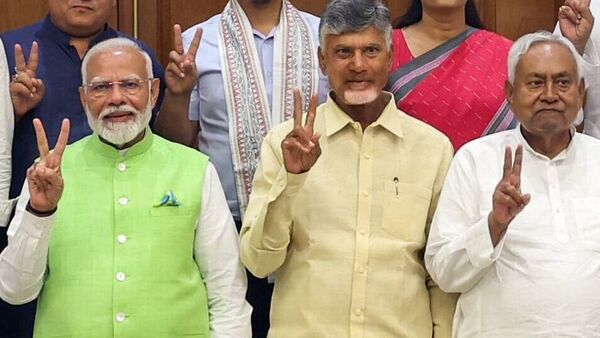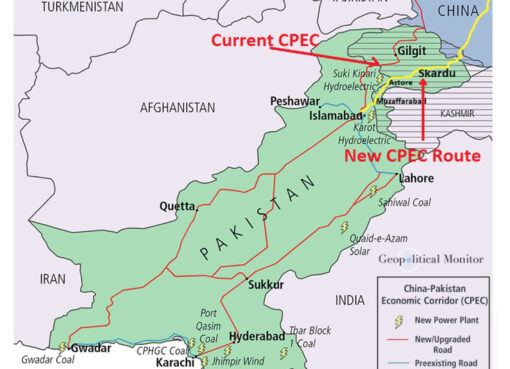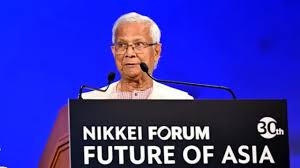Modi and his egg-heads will have to display dexterity that has not been on display thus far to keep the flock together
Prasad Nallapati*
Bruised and battered in the elections, Narendra Modi is all set to become Prime Minister of India for the third consecutive time – a record held by Jawahar Lal Nehru, for whom his Bharatiya Janata Party (BJP) has no more than disdain.
He has so far been the undisputed BJP mascot, enjoying absolute majority on the floor of Parliament for the past two terms. Even earlier, before he made his transition to national politics in 2014, he faced no challenge as the Chief Minister in home state of Gujarat.
Not any longer.
Verdict 2024, which has paved the way for Modi 3.0 has pushed India back into the coalition era.
True, remarkable electoral victories of the past had made him believe in his `invincibility’.
He started looking at himself a `God-man’ after his extensive, highly publicized and “fully paid” pilgrimage across India in the run up to the inauguration of Sri Ram Temple in Ayodhya early this year.
In an interview with News18 during his campaign trail in Varanasi on May 14, Modi said, “…. I was convinced that God has sent me. This energy could not be from my biological body, but was bestowed upon me by God…whenever I do anything, I believe God is guiding me.”
He ended his election campaign with 45-hour long meditation at Kanyakumari on the Southern tip of India. He sat on his marathon meditation atop Vivekananda Rock Memorial that was set up commemorating the 19th century Hindu monk’s visualization of his mission for New India.
SET BACK
All his dreams of a spectacular win of 400 plus seats in the 543-member Lok Sabha, the Lower House of Parliament, have come crumbling.
BJP has won just 240 seats, thus falling short of the simple majority of 272.
Pre-poll allies have, however, boosted the BJP strength to 293 giving Modi the right to be called ahead of the rival block, INDI alliance (I.N.D.I.A), to form the new government.
Two major constituents of Modi’s National Democratic Alliance, (NDA), Telugu Desam Party (TDP) of Andhra Pradesh and Janata Dal United (JD-U) from Bihar, hold the key to the government formation commanding 16 and 12 seats respectively.
Both parties had returned to the NDA in recent months.
Other allies include Shiv Sena (Shinde) of Maharashtra with 7 seats, Bihar’s Lok Janshakti Party, LJP, 5 seats, and Rashtriya Lok Dal (RLD) of Uttar Pradesh, and Janata Dal- Secular (JD-S) from Karnataka with 2 seats each.
None of these allies has anything common with the BJP and they joined together merely to serve the interests of their states or their personal ambitions.
All of them have come and gone into the coalition several times.
It is, thus, a fragile coalition that needs extraordinary skills to nurture and survive to last full term of five years.
The opposition I.N.D.I.A bloc, which secured 234 seats, is already making its moves to lure the NDA partners although it is a long shot for it to get to the half-way mark in Parliament.
MODI -DHARMA
Coalition Dharma is something alien to Modi.
For the past decade, as Prime Minister, he repeatedly demonstrated his faith in the dictum – ‘My way is the highway’.
Power is centralised in His Office, and all decisions, be it administrative or political, are taken in PMO, and presented as fait accompli.
Ministers are mere executors of decisions handed over to them.
Elections, local or national, are all fought in the name of Modi. Hubris on display? Well, it is.
Mandate 2024 demands course correction.
Election results have drilled deep holes in his armour and his party. Their mentor, the Rashtriya Swayam Sevak Sangh (RSS) may not hesitate to press breaks on his functioning, including a change of leadership down the lane in the worst-case scenario.
NAIDU FACTOR
The TDP’s alliance with Modi’s BJP in 2014 brought the party to power in the truncated Andhra Pradesh but the euphoria did not last long with the Prime Minister spurning demands of `special category status’ to make the state eligible for liberal central aid, and tax rebates.
The demand had cut across political lines since Andhra Pradesh had lost all key sources of income after Telangana was carved out with Hyderabad as its capital. In fact, the BJP used all means, fair and foul, to pump prime TDP’s arch-rival, YSR Congress Party (YSRCP) led by Jagan Mohan Reddy since the last general election held in 2019.
Compulsions have brought the BJP and TDP together again on the same platform in Andhra Pradesh though it is said that Chandrababu Naidu made the first moves of reconciliation to acquire a crutch for his victory march.
With BJP settling for a junior partner role, both faced the elections to Parliament and the state legislative assembly. And reaped rich dividends.
While TDP regained the mandate to rule the state, and cornered lion’s share of Parliamentary seats, the Modi party has secured a foothold in the state.
Now that Modi has missed his goal post in Parliament, he needs Naidu crutch in as much as the TDP supremo needs the Federal government on his side.
Both thus need each other and may not dare to burn the boats.
Well, Chandrababu Naidu will leverage his advantage to get the weakened Modi to yield to his demands. If he does so, as he is likely, it is par for the course.
But if the push comes to shove, Naidu may not hesitate to join the opposition alliance, if the latter is in a position to form government and deliver `special category status’ to his state.
NITISH FACTOR
Nitish Kumar, who is Bihar’s longest serving chief minister, (he is presently in his ninth term) has had his own flip-flops when it comes to alliance with Modi party.
In another year, Bihar will elect a new legislature. So much so, the Nitish-Modi-alliance is a made for each other though both had suffered credibility in the process.
Like Naidu, Nitish has also been clamouring for `special package’ to his impoverished state, and had gone public several times in the past that he would support any Federal Government that accedes to his demand.
In the post- 2024 poll scene, he will like to have his own pound of flesh from the new coalition government in New Delhi.
Modi cannot afford to lose Nitish once again and will have to cajole him by all means.
OTHER MAVERICKS
Two other allies, both from Maharashtra, are the products of a vertical split of Shiv Sena and Nationalist Congress Party (NCP), maliciously engineered by the BJP.
And both the Shiv Sena (Shinde) and the NCP (Ajit Pawar) have done badly at the hustings, and are staring at bleak prospects in the state assembly elections due later this year. They are an easy prey to get lured back to their old-fold, which would mean a threat to the BJP-led ruling dispensation in the state.
Put simply, Modi and his egg-heads will have to display dexterity that has not been on display thus far to keep the flock together.
Luckily for Modi 3.0, the opposition alliance, I.N.D.I.A-led by Congress leader Rahul Gandhi, is much farther from the 272-seat mark required for survival on the floor of Parliament.
What is more, the Congress party’s track record in coalitions, and the pushes and pulls of its coalition partners make the Grand Old Party (GoP) untrustworthy.
Narendra Modi will, therefore, be on watch in the coming months as he settles down to his new role.
Will he change his style of functioning?
Will he mould himself to deal with new realities thrust on him by coalition dharma?
There is no template, which means there are no ready answers.
Political stability and economic progress are inter-related. India needs both badly. And has no place for adventurism cut in the instant nirvana mode.
(*Prasad Nallapati is President of the Hyderabad-based think-tank, “Deccan Council for Strategic Studies,” and former Additional Secretary to the Govt of India)
—-




